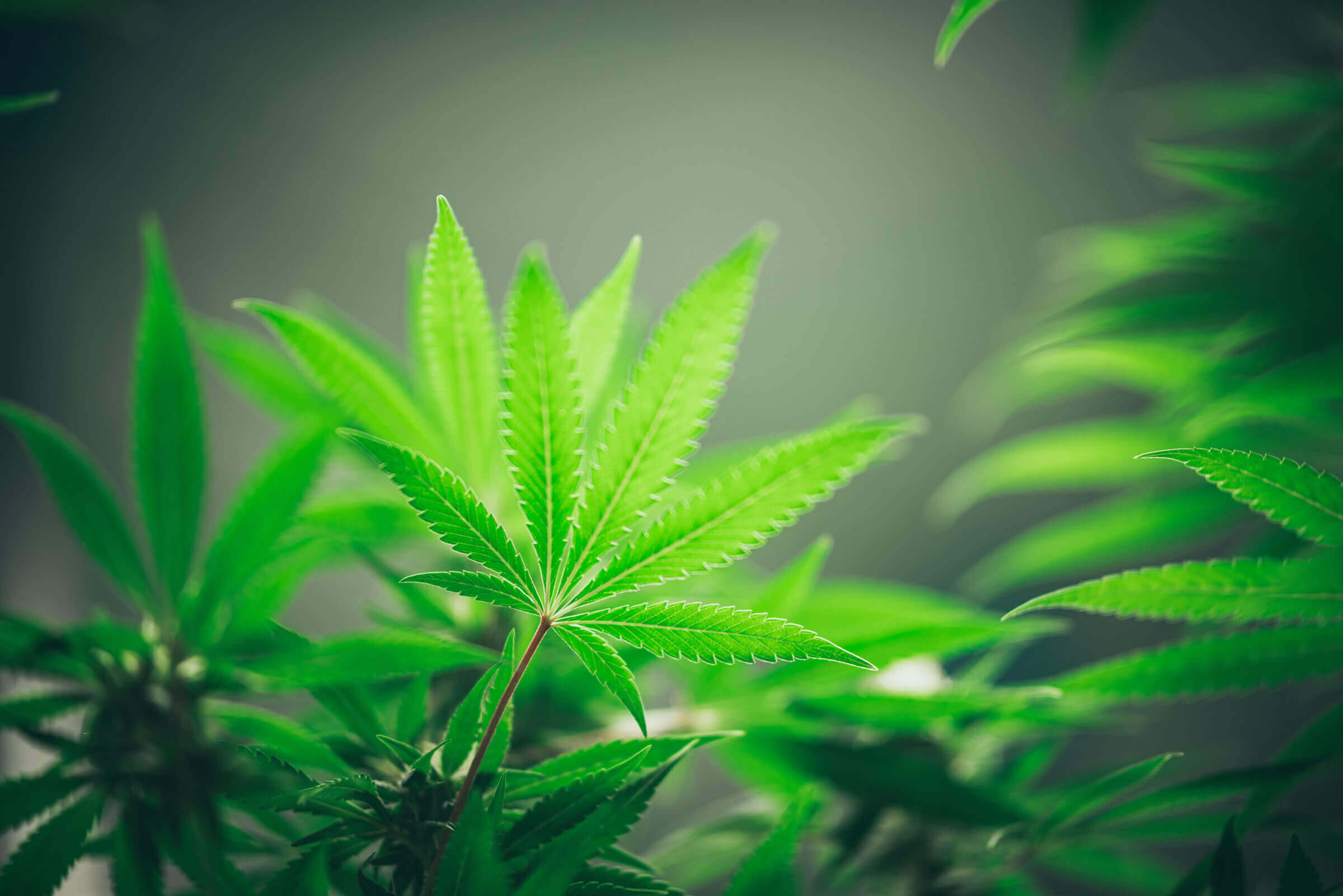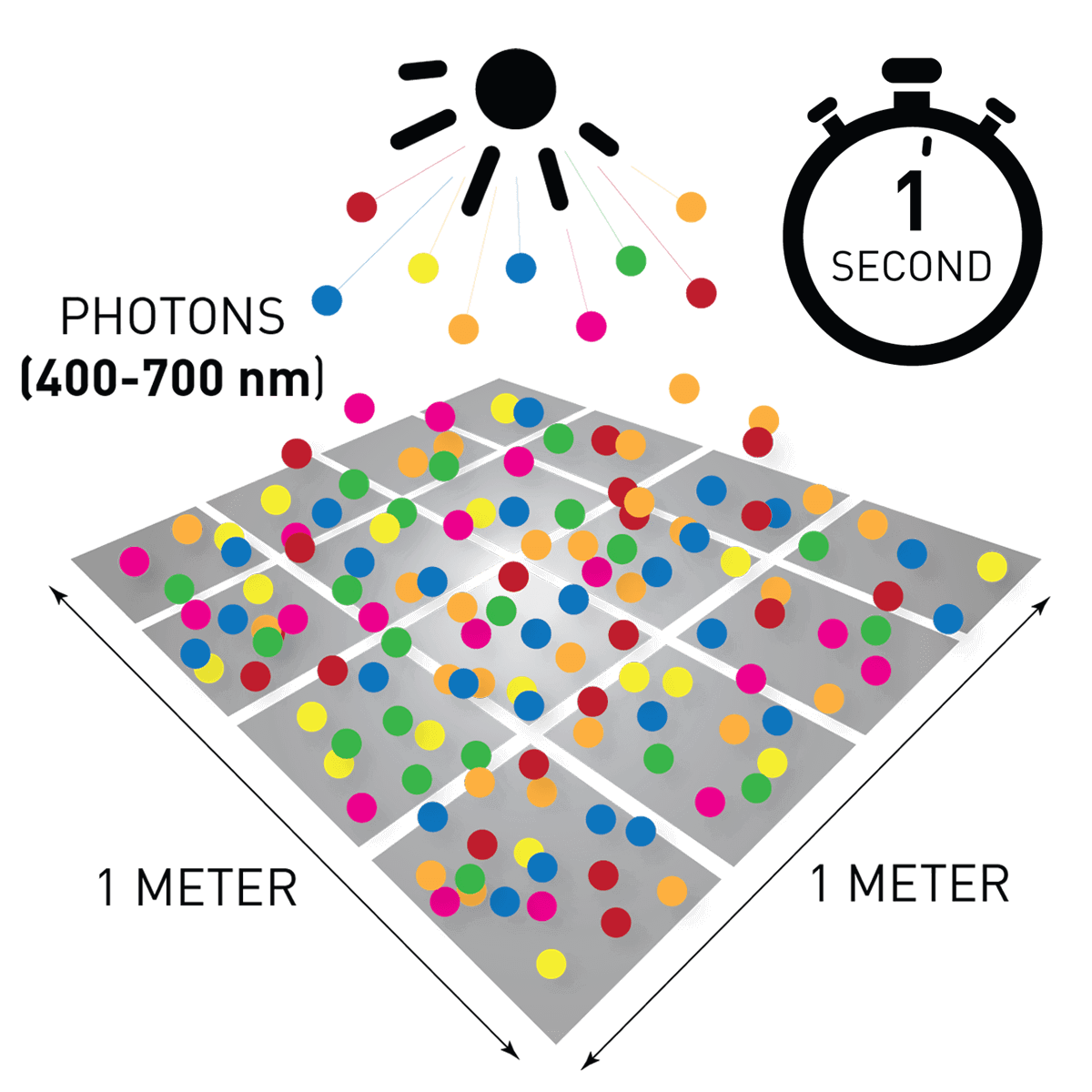
Growing Cannabis in High Light Intensity to Maximize Bud Yield
How to determine optimum light levels to maximize bud yield when growing indoors.
Cannabis research performed at Hawthorne R&D facility in Kelowna, Canada
Key takeaways:
- New LED technology makes it possible to grow at light intensities exceeding 1,000 PPFD, which is much higher than what is possible with HPS
- Growth in high light intensity requires CO2 injection to maximize growth & yield
- Internal R&D tests with Gavita RS 2400e have shown +50% in bud yield vs. HPS, +25% vs. Gavita RS 1700e and +17% vs Gavita CT 1930e*
- Additional benefits of canopy intensity >1,000 PPFD include faster crop cycles and more pronounced bud stacking
- Growers should consider the full system of inputs to avoid damaging plants with too much light
Photosynthetic Photon Flux Density (PPFD)
Commercial cannabis producers currently using high-pressure sodium (HPS) fixtures, the longstanding industry standard for horticulture,
are typically targeting a maximum photosynthetic photon flux density (PPFD) at the top of the mature crop canopy between 800-1000 µmol m-2 s-1. This metric of light intensity is generally referred to as the portion of electromagnetic radiation that can be used by plants.
More specifically, PPFD is the number of photons between 400-700 nanometers illuminating one square meter every second (see Figure 1). Over the past 5 years, innovations in LED technology have made it possible to engineer fixtures with a higher maximum PPFD than what an HPS lamp can emit. And emerging plant science research shows that cannabis yield is higher when PPFD levels are increased above 1000 µmol m-2 s-1 (Eaves et al., 2020, Rodriguez-Morrison, 2021). Here, we discuss how to determine optimum light levels to maximize bud yield when growing indoors.
The key to determining optimum PPFD requires an understanding of the plant metabolic process called photosynthesis. During photosynthesis, air is taken up by plant leaves to supply enzymes in the chloroplasts with carbon dioxide (CO2) that is converted into sugars to be used for growth. But cellular energy is needed for this to occur and the amount of light available to the plant regulates how much energy, and thus sugars, can be produced by photosynthesis. In other words, higher PPFD results in higher rates of photosynthesis – but only up to a certain point based on biochemical limits of each species.
Because indoor production uses a lot of electricity to power fixtures, it is very important not to target PPFD levels higher than what the plant can use. Fortunately, it is possible to pinpoint the exact PPFD needed to maximize photosynthesis using a device like the one pictured in Figure 2.
A Hawthorne R&D trial was performed to monitor the change in leaf photosynthetic rate across a range of light intensities. For this trial, the same type III cannabis (hemp) cultivar was grown at two different concentrations of CO2. The results in Figure 3 show that as light intensity increases, there is a rapid initial increase in photosynthesis that gradually plateaus to a maximum rate at very high PPFD. Looking closer at this data makes it possible to identify the lowest PPFD needed to maximize photosynthesis for this particular cultivar.

Figure 3: Response of photosynthesis to light intensity for C. sativa cv T1. Shown are data points for 3 plants grown at each CO2 concentration. Measurements were taken using the youngest, fully expanded leaf with chamber setpoints matching ambient environmental conditions within the high CO2 grow room. At each PPFD level, the photosynthetic rate was brought to steady-state before switching to the next light level. As a reference, the PPFD of the sun on a cloud-free day is approximately 2000 µmol.
First, notice that the blue curve, which represents plants grown in 400 ppm CO2 (low CO2), plateaus at a much lower rate than the orange curve, which represents plants grown in 1500 ppm CO2 (high CO2). In addition, there is only a small increase in photosynthetic rate between 1000 PPFD and 2000 PPFD for plants growing in low CO2.
In contrast, there is a relatively large increase in photosynthetic rate for plants growing in high CO2 over that same range in PPFD. These results indicate that a grower can expect a >30% increase in plant metabolic activity by increasing PPFD above 1000 µmol m-2 s-1, but only in facilities that are equipped to inject CO2.
But does an increase in photosynthesis translate into greater yield? The primary goal of a series of type I cannabis (marijuana) production trials run at the Hawthorne R&D facility in Kelowna, British Columbia, Canada was to test this hypothesis.
| Fixture | PPFD at Max. Height (µmol m-2 s-1) | Bud Yield (g per plant) |
|---|---|---|
| 1000W DE HPS | 728 +/- 59.2 | 51.0 +/- 2.30 |
| CT 1930e | 917 +/- 55.3 | 65.1 +/- 3.19 |
| RS 1700e | 1051 +/- 33.5 | 61.1 +/- 3.68 |
| RS 2400e | 1741 +/- 142.0 | 76.8 +/- 2.67 |
Table 1: Mean values for each fixture type are based on 2 complete crop cycles consisting of 8 subsample plants randomly selected within the grow room for each crop cycle. PPFD measurements were taken using LI-180 (Licor Biosciences, Inc) at the top of the plant after 4 full weeks in 12-h short days. At the end of the crop cycle, bud yield was determined by drying plants to 10-15% moisture, separating flowers/leaves from the stem and removing leaves with a tabletop trimmer. All fixtures were tested with C. sativa cv. Black Cherry Punch 2 grown in rockwool and fertigated continuously with General Hydroponics® Flora Pro™ base nutrients following the ‘Expert’ feed program.
Over the past year, the same cultivar was grown with four different Gavita fixtures using the same feed program and in the same substrate. Consistent with indoor cannabis production, CO2 was injected into all grow rooms throughout the crop cycle. In addition, all grow rooms were set to maintain the same environmental conditions and plants were managed with the same cultivation practices. The main difference was maximum PPFD at the top of the canopy during flower once plants had reached their maximum height. As you can see in Table 1, there was a strong trend towards greater bud yield as PPFD increased.
Besides yield, there were additional benefits observed when growing in high light intensity.
Figure 4 shows the results of an R&D trial on type III cannabis (hemp) run at the Hawthorne field station in Gervais, Oregon. During the vegetative phase, all plants were grown at the same PPFD and triggered to flower on the same day. For the remainder of the crop cycle, however, plants were grown at one of four different PPFD levels. Three weeks into flower, the plants growing in high light intensity had larger, more well defined inflorescences. Because of this accelerated flower development it was possible to harvest these plants sooner.

Figure 4: Visual comparison of inflorescence development after three weeks at different PPFD. During veg, all plants were grown at the same PPFD. In addition, all plants (C. sativa cv T1) were grown in 2-gallon pots filled with Mother Earth® Coco+Perlite and continuously fertigated with FloraPro™ base nutrients following the ‘Expert’ feed program.
To conclude, the key findings from these three R&D trials show that:
- Injecting CO2 into the growth environment is needed to get the full benefit of high light intensity.
- Growing in high light intensity can potentially deliver higher yield.
- High light intensity leads to faster progression through the flowering phase, which has the potential to reduce crop cycle time.
It is important to note that adjustments to best grower practices may need to be implemented when growing in higher light intensities. In particular, plants growing in high PPFD will likely transpire more. Without increasing the irrigation volume and/or frequency, mild to moderate drought stress is possible. Careful monitoring of soil moisture, preferably with root zone moisture sensors will help understand when and how much water plants need.
*Testing conducted on a Type I cultivar in Kelowna, Canada utilizing the FloraPro™ Expert feed program. Actual results will vary depending upon specific growing conditions.
References
Eaves J, Eaves S, Morphy C, Murray C (2020) The relationship between light intensity, cannabis yields, and profitability. Agronomy Journal 112, 1466-1470.
Rodriguez-Morrison V, Llewellyn D, Zheng Y (2021) Cannabis Yield, Potency, and Leaf Photosynthesis Respond Differently to Increasing Light Levels in an Indoor Environment. Frontiers in Plant Science 12, DOI=10.3389/fpls.2021.646020




